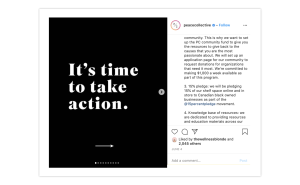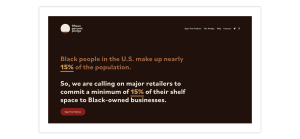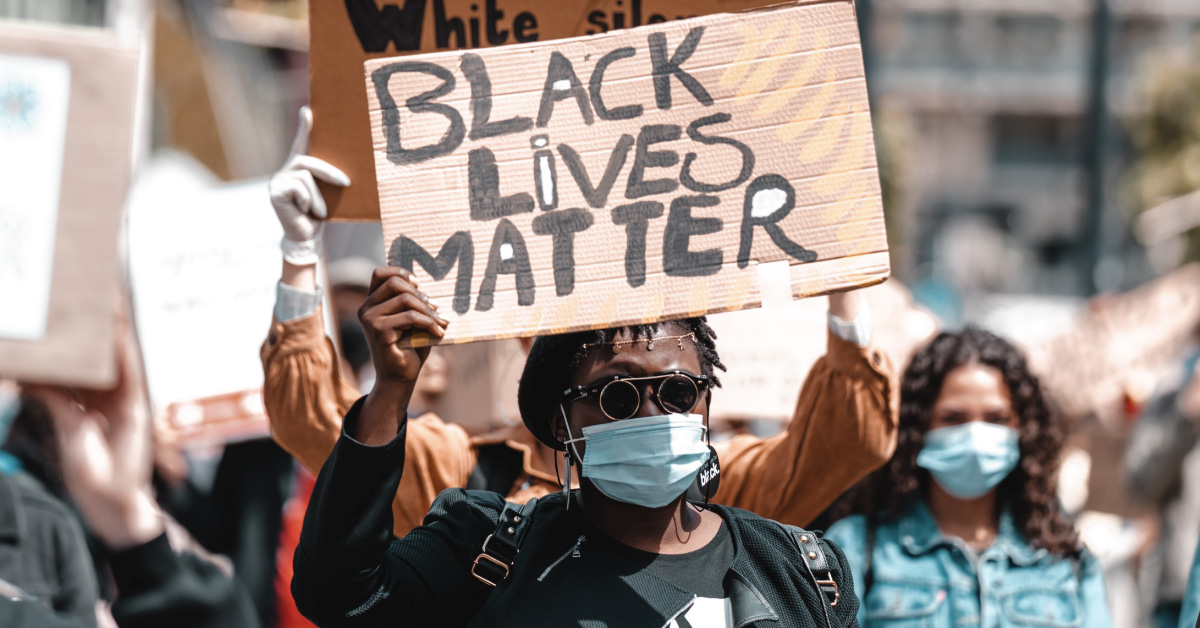How Your Startup Can Show Support for Black Lives Matter
Across the globe, from Canada to the US, New Zealand and Europe, protestors have been gathering to show their support for the Black Lives Matter movement. For the past weeks thousands have stood together to condemn racism, fight against police brutality and remove historic landmarks celebrating the slave trade.
Meanwhile, brands have been doing their part, sharing statements and aligning themselves with the cause. But, more often than not, what they’re doing is not enough and it’s leaving consumers wondering why the brands they love are not doing more.
No matter how you look at it – your brand, as a Challenger, and as part of society, has an integral part to play. Here, we illustrate how.
Share More Than Just A Statement
In light of the erupting protests, social media was flooded with black squares from people standing in solidarity with the Black community. Naturally, brands followed, offering posts and statements of their own. But, this is a situation where action is what truly speaks, and brands including L’Oreal have already been criticized for the statements they’ve released because their past approach speaks differently.
You may have posted a statement announcing your support to the cause and that you’re building a better future but what, beyond those words, does that mean? What are you doing to actually amplify that support?

Canadian apparel brand Peace Collective (P/C) is one brand doing it right. Though it did release a statement, it did so much more beyond that. First, it announced two funds; one being a P/C Designer Fund, offering up-and-coming Black Canadian designers money where 50% will go towards launching their business while Peace Collective takes care of their manufacturing costs, and the other 50% will go towards a charity of their choice.
The second fund, a P/C Community Fund, sees the community offering suggestions for organizations that need donations the most. The brand has also shared a number of tools and resources for educating yourself and staying informed across its channels.
Creating a fund might not be something your brand can do, but what’s important is moving beyond words to action.
Make Changes From The Inside Out
For brands to truly show their support for the cause, changes need to be made from the inside out, beyond external marketing to the team composition, sourcing, logistics and way your brand operates.

The 15 Percent Pledge is a good example of this and something you could (and should) be aligning yourself with. Spurred by the idea that black people make up 15% of the population in the US, the pledge asks brands to:
Step 1: Take stock of the proportion of your business’ shelf space and contracts are given to Black-owned businesses and suppliers to ensure it is representative.
Step 2: Take ownership of what you find. Interrogate your blinds spots and biases and implement concrete steps to make change. Publish these findings internally and externally and use them to inform a new commitment.
Step 3: Take action. Define and publish a plan on how you’re going to grow the share of Black businesses to at least 15%. Look at how you’re going to keep yourself both accountable and transparent in the long-term before executing that plan.
Another huge problem is the lack of education, and so you should be giving the people that propel your brand the time to understand and educate what and why this is happening. Starting this year, announced via an internal statement, Nike will allow all employees to take paid leave on June 19th, or Juneteenth. It’s a holiday that commemorates the abolishment of slavery in the US, but will be used as “an important opportunity to better commemorate and celebrate Black history and culture”. The brand will also be introducing an education program focused on racial inequality.
While there’s no doubt that offering education resources and space for employees to eradicate ignorance, is a positive step, still more needs to be done. As Mark Ritson illustrated in his recent opinion piece for Marketing Week, Nike (and many other brands) may be taking these steps but its leadership team, shown in the article, seriously lacks diversity.
Take this time to completely reassess what your brand represents. Ask yourself how you’re educating your team but, beyond that, how you’re building it too.
Shape The Future You Want To See
Let’s be clear: This is an opportunity. Not for personal profit or to boost your brand profile, but to introduce and activate meaningful change. We believe the DNA of a Challenger Brand is defined by its ability to redefine the status quo and do more than business’s big players to create a better, brighter future.
That’s never been more essential than it is now.
Throughout the COVID-19 pandemic we’ve had to reimagine everything to create a new normal and this too demands that. The world is watching, and there’s lots more we all have to do.



